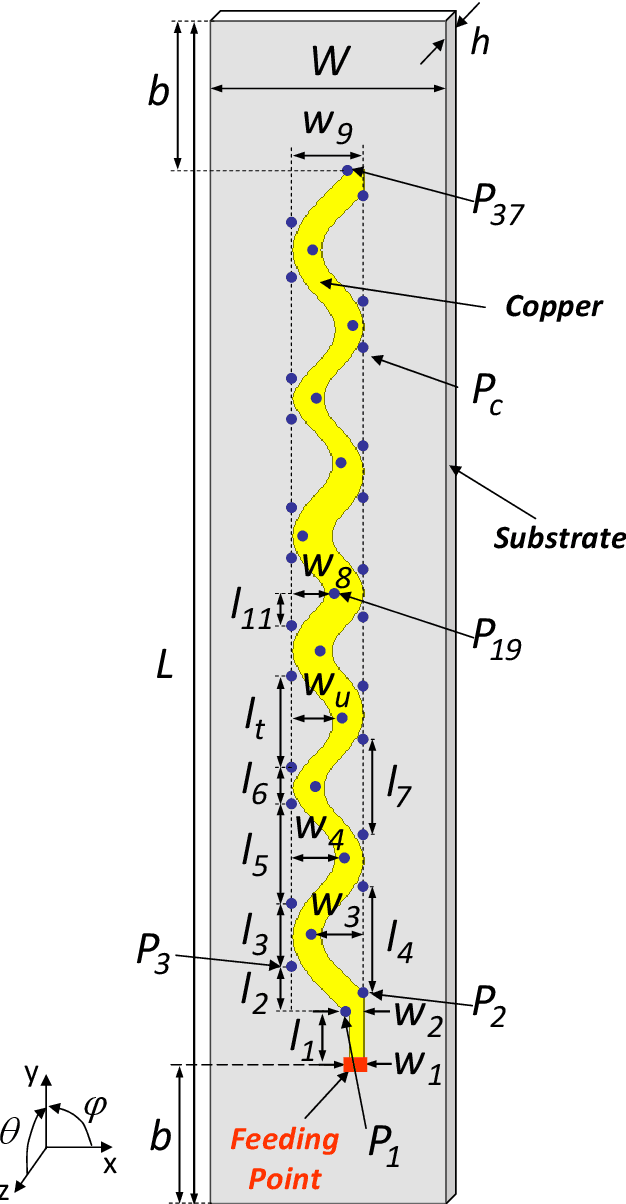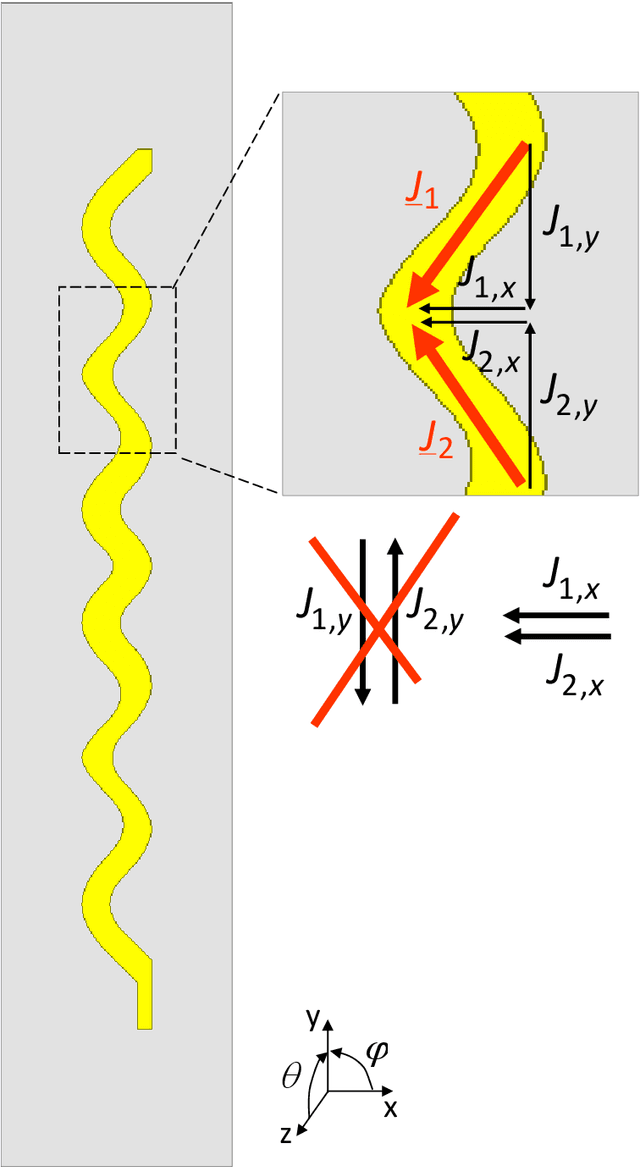Mohammad Abdul Hannan
Spline-Shaped Microstrip Edge-Fed Antenna for 77 GHz Automotive Radar Systems
Jul 26, 2022



Abstract:An innovative millimeter-wave (mm-wave) microstrip edge-fed antenna (EFA) for 77 GHz automotive radars is proposed. The radiator contour is modeled with a sinusoidal spline-shaped (SS) profile characterized by a reduced number of geometrical descriptors, but still able to guarantee a high flexibility in the modeling for fulfilling challenging user-defined requirements. The SS-EFA descriptors are effectively and efficiently optimized with a customized implementation of the System-by-Design (SbD) paradigm. The synthesized EFA layout, integrated within a linear arrangement of identical replicas to account for the integration into the real radar system, exhibits suitable impedance matching, isolation, polarization purity, and stability of the beam shaping/pointing within the target band [76:78][GHz]. The experimental assessment, carried out with a Compact Antenna Test Range (CATR) system on a printed circuit board (PCB)-manufactured prototype, assess the reliability of the outcomes from the full-wave (FW) simulations as well as the suitability of the synthesized SS-EFA for automotive radars.
Modular Sparse Conical Multi-beam Phased Array Design for Air Traffic Control Radar
Aug 18, 2021



Abstract:The design of a conical phased array antenna for air traffic control (ATC) radar systems is addressed in this work. The array, characterized by a fully digital beam-forming (DBF) architecture, is composed of equal vertical modules consisting of linear sparse arrays able to generate on receive multiple instantaneous beams pointing along different elevation directions. The synthesis problem is cast in the Compressive Sensing (CS) framework to achieve the best trade-off between the antenna complexity (i.e., minimum number of array elements and/or radio frequency components) and radiation performance (i.e., matching of a set of reference patterns). Towards this aim, the positions of the array elements and the set of complex element excitations of each beam are jointly defined through a customized CS-based optimization tool. Representative numerical results, concerned with ideal as well as real antenna models, are reported and discussed to validate the proposed design strategy and point out the features of the deigned modular sparse arrays also in comparison with those obtained from conventional arrays with uniformly spaced elements.
 Add to Chrome
Add to Chrome Add to Firefox
Add to Firefox Add to Edge
Add to Edge